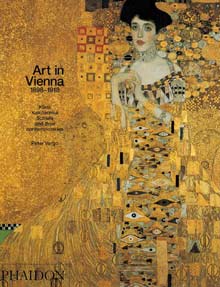|
The city that at one point of time in the history controlled much of the Central and Eastern Europe still maintains some of the splendours of Austro-Hungarian Empire. Today, Vienna serves as the capital of Austria, the city known for imperial palaces and art museums, ornate cafes and beer taverns, baroque churches and stately elegance, and more than anything else the birthplace of Mozart, Beethoven, Haydn, Schubert, Brahms, and so on. Come and visit the city that can easily claim to have the strongest musical traditions in Europe and walk around in one of the most charming European capitals.
Gustav Mahler's Vienna
 Mahler
From the composer's lifetime to the present day, Gustav Mahler's music has provoked extreme responses from the public and from experts. Poised between the Romantic tradition he radically renewed and the austere modernism whose exponents he inspired, Mahler was a consummate public persona and yet an impassioned artist who withdrew to his lakeside hut where he composed his vast symphonies and intimate song cycles. His advocates have produced countless studies of the composer's life and work. But they have focused on analysis internal to the compositions, along with their programmatic contexts.
In this volume, musicologists and historians turn outward to examine the broader political, social, and literary changes reflected in Mahler's music. Peter Franklin takes up questions of gender, Talia Pecker Berio examines the composer's Jewish identity, and Thomas Peattie, Charles S. Maier, and Karen Painter consider, respectively, contemporary theories of memory, the theatricality of Mahler's art and fin-de-siècle politics, and the impinging confrontation with mass society. The private world of Gustav Mahler, in his songs and late works, is explored by leading Austrian musicologist Peter Revers and a German counterpart, Camilla Bork, and by the American Mahler expert Stephen Hefling.
Mahler's symphonies challenged Europeans and Americans to experience music in new ways. Before his decision to move to the United States, the composer knew of the enthusiastic response from America's urban musical audiences. Mahler and His World reproduces reviews of these early performances for the first time, edited by Zoë Lang. The Mahler controversy that polarized Austrians and Germans also unfolds through a series of documents heretofore unavailable in English, edited by Painter and Bettina Varwig, and the terms of the debate are examined by Leon Botstein in the context of the late-twentieth-century Mahler revival.
Mahler
From the composer's lifetime to the present day, Gustav Mahler's music has provoked extreme responses from the public and from experts. Poised between the Romantic tradition he radically renewed and the austere modernism whose exponents he inspired, Mahler was a consummate public persona and yet an impassioned artist who withdrew to his lakeside hut where he composed his vast symphonies and intimate song cycles. His advocates have produced countless studies of the composer's life and work. But they have focused on analysis internal to the compositions, along with their programmatic contexts.
In this volume, musicologists and historians turn outward to examine the broader political, social, and literary changes reflected in Mahler's music. Peter Franklin takes up questions of gender, Talia Pecker Berio examines the composer's Jewish identity, and Thomas Peattie, Charles S. Maier, and Karen Painter consider, respectively, contemporary theories of memory, the theatricality of Mahler's art and fin-de-siècle politics, and the impinging confrontation with mass society. The private world of Gustav Mahler, in his songs and late works, is explored by leading Austrian musicologist Peter Revers and a German counterpart, Camilla Bork, and by the American Mahler expert Stephen Hefling.
Mahler's symphonies challenged Europeans and Americans to experience music in new ways. Before his decision to move to the United States, the composer knew of the enthusiastic response from America's urban musical audiences. Mahler and His World reproduces reviews of these early performances for the first time, edited by Zoë Lang. The Mahler controversy that polarized Austrians and Germans also unfolds through a series of documents heretofore unavailable in English, edited by Painter and Bettina Varwig, and the terms of the debate are examined by Leon Botstein in the context of the late-twentieth-century Mahler revival.
Architecture

This architectural guide is the first comprehensive publication on Vienna that can be used both as guide and lexicon. A selection of 500 buildings in the city, ranging from examples of the Gothic period to those of our century was compiled by a team of specialists in the field, and is accompanied by essays on the history of the city, its recent history, residential building and 20th century architecture in Vienna. 450 photos and over 100 drawings give concrete information on the physical fabric of Viennese architecture, and well-known architects have devised routes taking in the interesting examples and given personal tips, bringing to life the icons of the Viennese building tradition.
|











 View movies
View movies